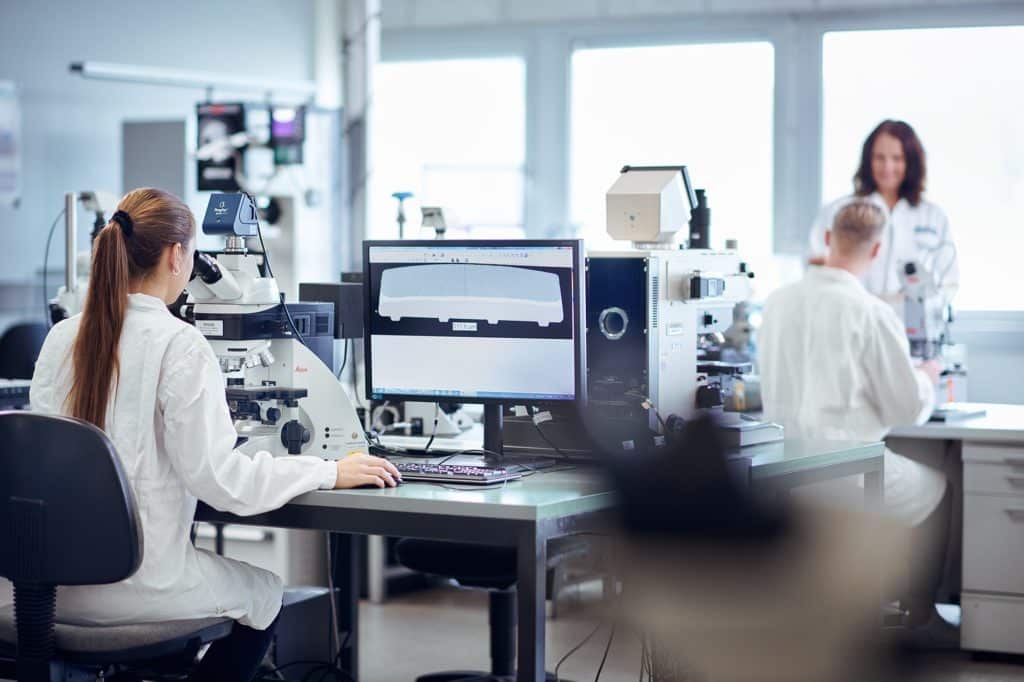
Silver-zinc oxide contact materials with 8 – 10 wt-% oxide content, including small other metal oxide additives, are manufactured exclusively by powder metallurgy. For applications in AC relays, wiring devices Ag/ZnO compositions have shown good electrical performance. As for other silver-metal oxide materials the processing includes the production of semi-finished materials followed by manufacturing contact tips and/or contact rivets. Due to their high welding and arc erosion resistance Ag/ZnO contact materials are an economic alternative to Ag/SnO₂.
This family of contact materials typically containing 35-65 wt-% tungsten carbide consists of a combination of the hard and wear resistant WC with high conductivity Ag. Compared to Ag/W these Ag/WC materials are characterized by a higher weld resistance. They also exhibit a lower increase in contact resistance under nominal load switching duty.
For even higher requirements on heat rise small additives of graphite are used which in turn however reduce the arc erosion resistance to a certain degree. Such silver-tungsten carbide+graphite materials with 27 wt-% WC and 3 wt-% graphite or 16 wt-% WC and 2 wt-% graphite are manufactured as discrete tips utilizing the press-sinter-repress (PSR) process.
Copper–tungsten (CUWODUR) materials with typically 60-85 wt% tungsten are produced by the infiltration process with the tungsten particle size selected according to the end application. W/Cu materials exhibit a very high arc erosion resistance. Compared to silver–tungsten materials they are however less suitable to carry permanent current. With a solid tungsten skeleton as it is the case for W/Cu infiltrated materials with 70-85 wt% tungsten the lower melting component copper melts and vaporizes in the intense electrical arc. At the boiling point of copper (2567°C) the still solid tungsten is efficiently “cooled” and remains pretty much unchanged.
The main application areas for CU/W materials are as arcing contacts in load and high power switching in medium and high voltage switchgear as well as electrodes for spark gaps and over voltage arresters.
You are currently viewing a placeholder content from Vimeo. To access the actual content, click the button below. Please note that doing so will share data with third-party providers.
More InformationYou are currently viewing a placeholder content from YouTube. To access the actual content, click the button below. Please note that doing so will share data with third-party providers.
More InformationYou need to load content from reCAPTCHA to submit the form. Please note that doing so will share data with third-party providers.
More InformationYou are currently viewing a placeholder content from Facebook. To access the actual content, click the button below. Please note that doing so will share data with third-party providers.
More InformationYou are currently viewing a placeholder content from Instagram. To access the actual content, click the button below. Please note that doing so will share data with third-party providers.
More InformationYou are currently viewing a placeholder content from X. To access the actual content, click the button below. Please note that doing so will share data with third-party providers.
More Information